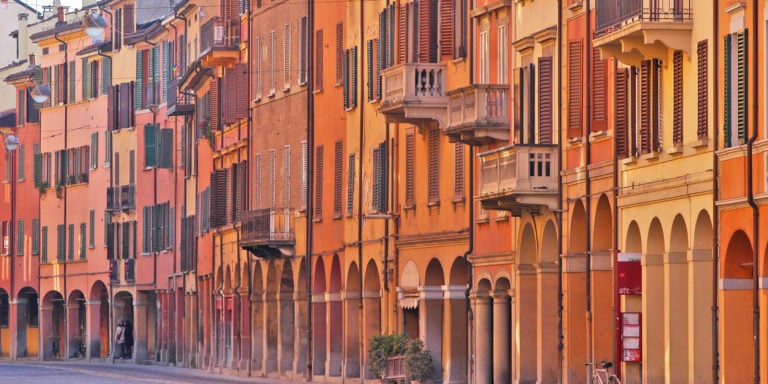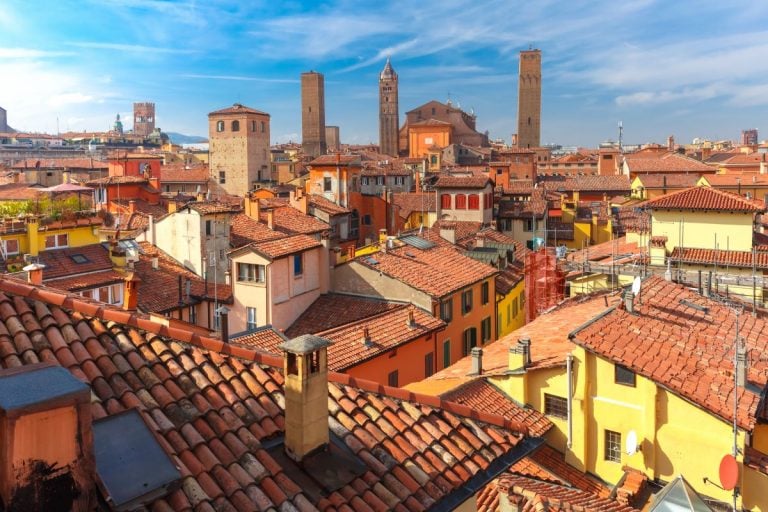
Time
24 h
If you visited Bologna at least once, I am sure you found yourselves strolling along the arcade corridors and buildings around the stunning Piazza Santo Stefano, a triangular widening behind the Two Towers.
Here, among the voices of diners sitting at small tables and groups of young people chatting along the sidewalks, your attention will surely be caught by a small entrance door at the bottom of the piazza.
A naked building, without embellishments, but still standing out in the surrounding urban environment. Faded by the passing of time, an inscription on the portal archivolt (Sancta Santorum) welcomes us pointing the way to understand where we are.
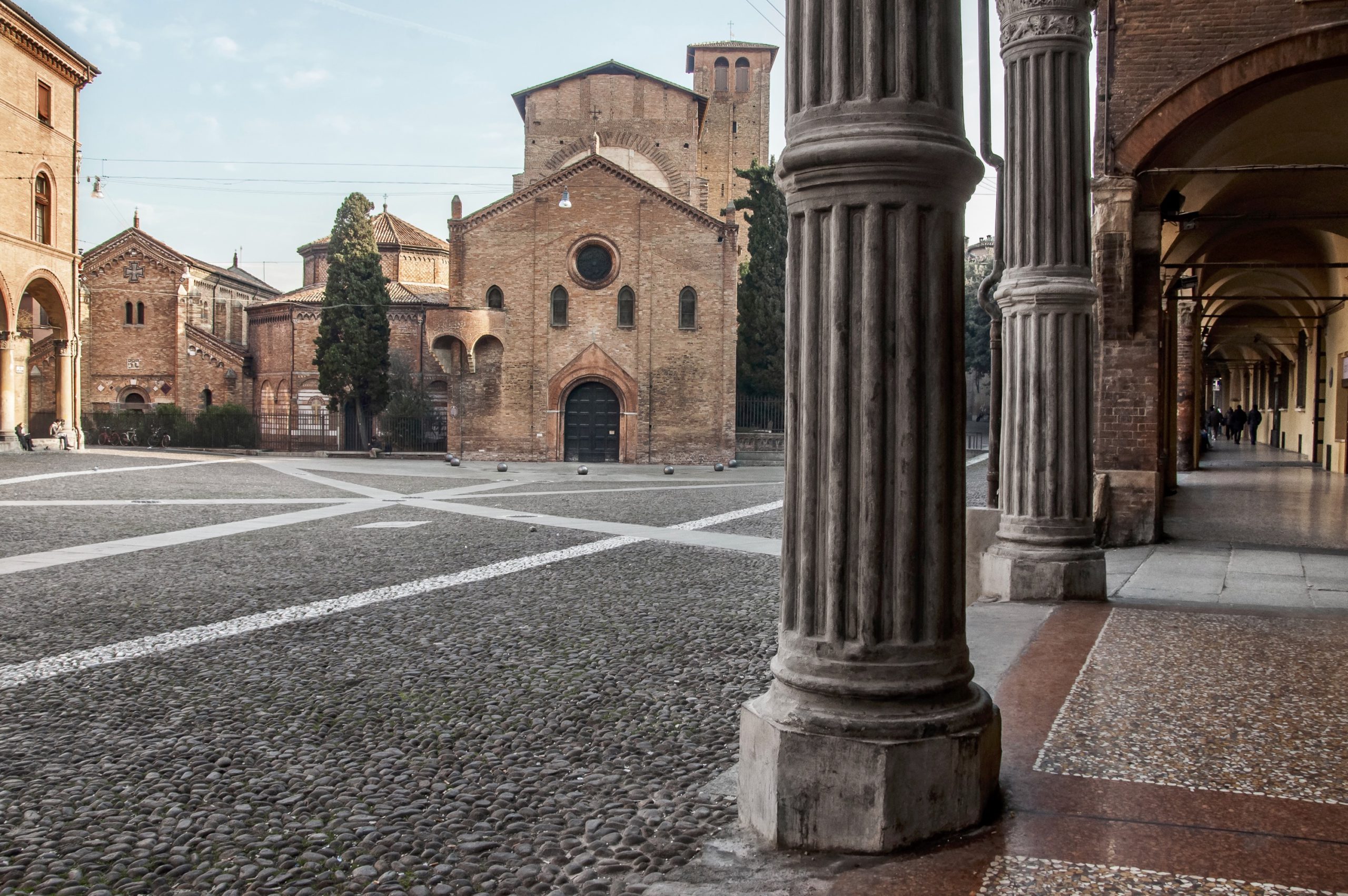
The complex of Santo Stefano, locally known as “complesso delle Sette Chiese” (complex of the Seven Churches), is one of the most important religious buildings in Bologna. The building has the status of minor basilica, an important recognition including a certain precedence before the other Italian religious buildings and creating a direct connection with the Pope in terms of importance and prestige.
Guardian of precious treasures, the building has been the object of research by architects, archaeologists, historians and churchmen throughout history because of the fascinating mysteries about it.
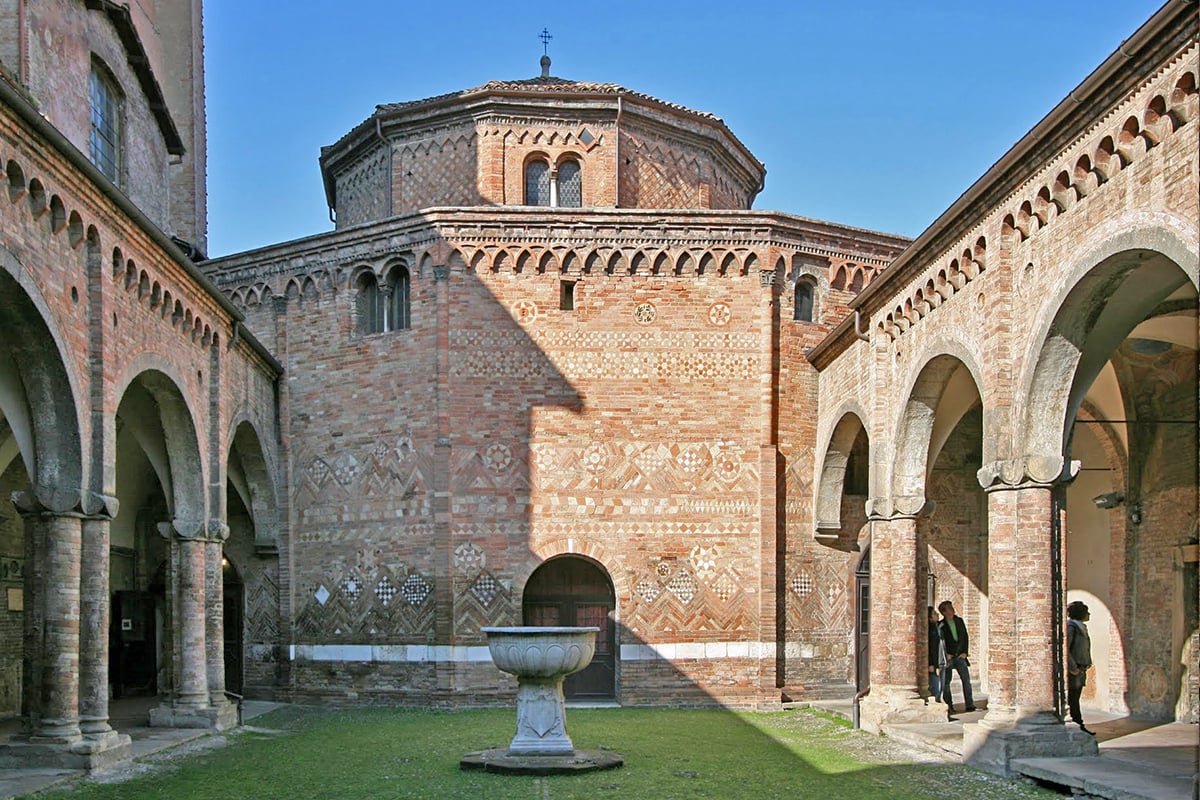
According to the tradition, the original core of the structure was built at the beginning of the 5th century AD by Bishop Petronius over the ruins of a temple dedicated to goddess Isis.
The intention was to build it as a simulacrum of the Church of the Holy Sepulchre in Jerusalem, but it gradually became a tangle of buildings – one of the most interesting Romanesque monuments in Bologna.
The visit to the complex is not diachronic – you will go back and forth in the centuries as you enter the different buildings that make it up. Roaming within its walls can thus be surprising and disorienting, as you easily go from the 7th century with the Church of Saint John the Baptist – the first building – to the 5th century with the nearby Basilica of the Holy Sepulchre up until the 4th century with the Basilica of the Saints Vitalis and Agricola.
Every door is a time travel: it is a feeling that is difficult to put into words, something going beyond the religious precepts and the spiritual belief of the visitors.
All the buildings bear on their brick-built skin evidences of Roman, Byzantine, Lombard, Frankish, Ottonian, Benedictine influences surrounded by a Romanesque atmosphere caused by the renovation works carried out at the end of the 19th and the beginning of the 20th century.
That is the reason why it is difficult to distinguish the different styles and additions among the folds of history, but it is possible to broadly piece together the history and development of this remarkable complex.
A journey through history
 The early days of Santo Stefano: 80 – 100 AD
The early days of Santo Stefano: 80 – 100 AD
Around the end of the 1st century AD, a rich matron named Calpurnia decided to build a temple dedicated to goddess Isis in an area outside the city walls that was rich in water sources.
At the centre of the building, she ordered the construction of a large dodecagonal basin, from which a rivulet of water used in acts of purification and resurrection of the soul came out – a clear reference to the mysticism of the Egyptian religion.
From a pagan place of worship to a Christian religious building: 393 – 450 AD
At the end of the 4th century AD (393 AD), Ambrose, Bishop of Milan, found the tombs of the first Bolognese martyrs, Vitalis and Agricola, right in this area. The pagan building was taken up by the Christian faith and started changing its appearance.
Just a few years later (around 450 AD), Petronius, Bishop of Bologna, decided to had a church built for the Saints Vitalis and Agricola, which is still visible today.
But his work didn’t end here. He also wanted to recreate the holy places of Jerusalem in his city. The project begins with the transformation of the temple of Isis into a covered domed baptistery, consecrated with the water of the Jordan river.
Finally, he selected this place as the burial place of his remains, which were kept here until they were moved into the homonymous basilica.
Between the Antiquity and the Early Middle Ages: 450 – 830 AD
With the death of Petronius, the complex started to lose its importance. What once was the baptistery became a religious building dedicated to martyr Stephen, called Rotonda Stefaniana.
In 737 AD, the Lombards arrived in the city. They chose this area as their religious centre and built a church dedicated to Saint John the Evangelist, today called Chiesa del Crocifisso (Church of the Holy Crucifix).
Some years later, the Franks. Charlemagne’s devotion promoted the cult of Saint Vitalis and the building was considerably developed. It was also mentioned in a document of 887 AD signed by Charles the Fat as “Sanctum Stephanum qui dicitur Sancta Hjerusalem”.
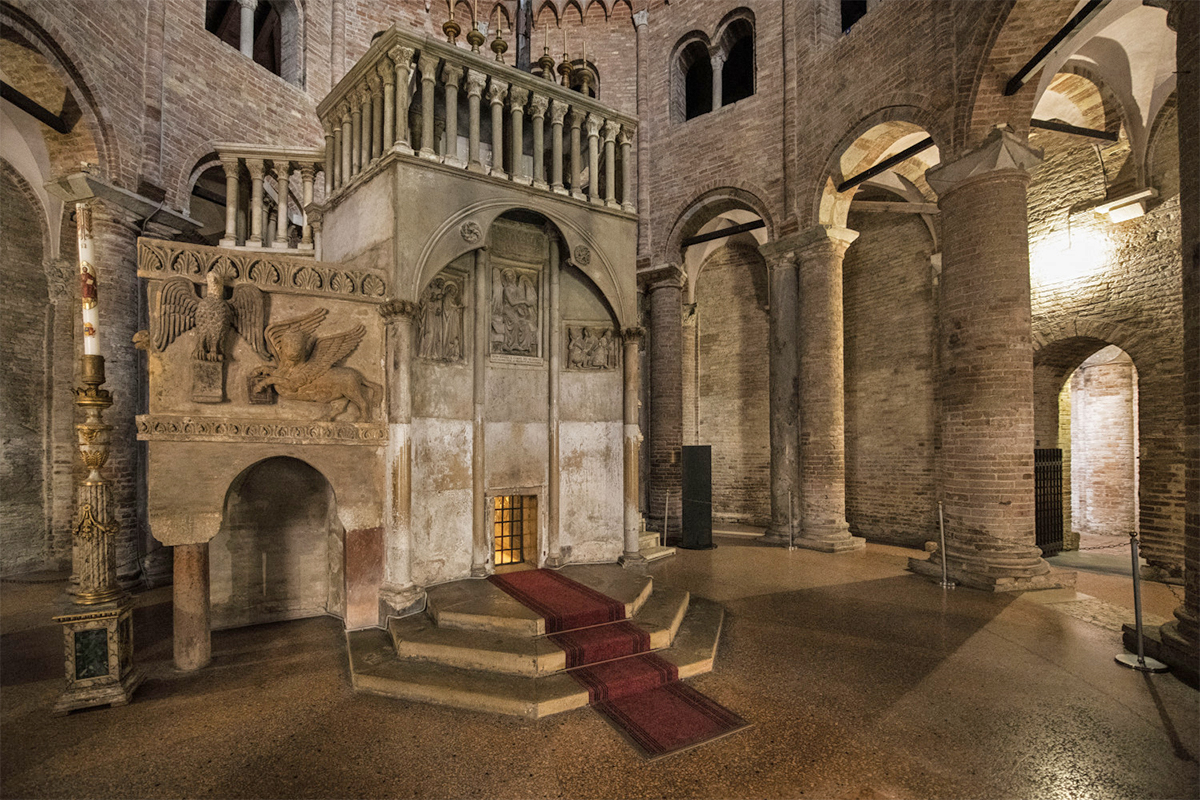
At the beginning of year 1000 AD
After the end of the Carolingian dominion, the complex was abandoned, started to crumble and was also damaged by the Hungarians in 902 AD.
With the arrival of the Benedictine monks of Cluny and San Bartolomeo di Musiano (983 AD), things changed – the whole complex knew a new period of splendour.
In just a short while, the area took the form that it has today. Rotonda Stefaniana was transformed into Chiesa del Santo Sepolcro (Church of the Holy Sepulchre).
The monastery was enlarged; a bell tower, Chiesa di San Giovanni Battista Superiore (Church of Saint John the Baptist) and Chiesa de’ Confessi (today Cripta della Chiesa del Crocifisso – Crypt of the Church of the Holy Crucifix) were built; and the martyrium was renovated.
Finally: from 1200 to 1900 AD
From the 13th century, the complex underwent other transformation and new parts were added, but the original structure was maintained.
New chapels and altars were added (that is the reason why Santo Stefano is also called “chiesa dai 300 altari” – the church with 300 altars) and, while the monastic building was emptied, the sanctuary was chaotically enriched.
Almost seven centuries later, at the end of the 19th century, the whole structure underwent major renovation works that aimed to bring back its 12th-century original splendour.
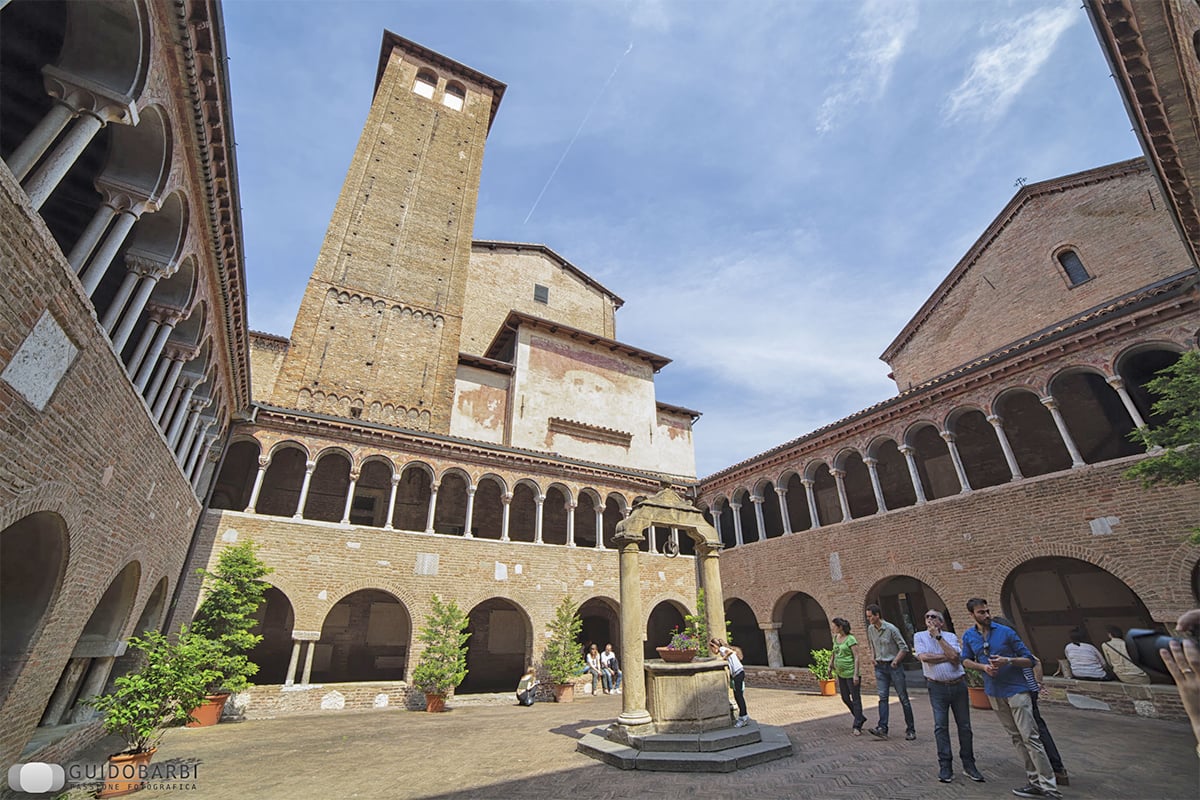
Fun facts
The Passion of Christ
According to Vita Sacti Petroni (1180 AD), Bishop Petronius wanted to symbolically recreate the places of Jerusalem related to the Passion of Christ inside the Church of Santo Stefano.
Inside the church, many elements dating back to different periods show this function.
Among them are: the reconstruction of the Holy Sepulchre of Jerusalem in the Basilica of the Holy Sepulchre; the Courtyard of Pilate, with the Lombard basin at the centre; the stone rooster dating back to the 14th century located under the porch; and a black marble column standing for the stone where Christ was whipped.
The world’s most ancient nativity scene
The Church of the Trinity (or Martyrium) permanently houses a group of life-size wooden statues representing the adoration of the Three Kings.
Apparently, it is the world’s most ancient nativity scene made of all-round statues, probably sculpted in the last decade of the 13th century by an anonymous sculptor from Bologna.
Dante Alighieri
According to the tradition, as he studied Law in Bologna, Dante frequently visited the complex of Santo Stefano.
Apparently, he also drew inspiration from some monstrous capitals of the upper gallery of the medieval cloister (12th century) for some forms of atonement described in the Purgatory – one of them representing a naked man pressed by a large boulder and another one depicting a man with the head rotated by 180°
The first church destroyed by the Church
At the end of the 14th century AD, a sarcophagus with the inscription Simone (real name of Saint Peter) was found under the ground of the Church of the Saints Vitalis and Agricola.
Eager to have a continuous flow of pilgrims, the monks started to spread the word about what they considered to be the remains of the Father of the Church.
It was then that Pope Eugene IV at first denied everything, then, as his words did not have any effect, he had the building uncovered and filled with dirt up to the height of the mullioned windows.
The structure remained partially destroyed until 1493 when Pope Alexander VI turned it back into a religious building, provided that it was dedicated to the Saints Vitalis and Agricola.
Author

Davide Marino
Davide Marino was born archaeologist but ended up doing other things. Rational – but not methodic, slow – but passionate. A young enthusiast with grey hair
You may also like
The Most Beautiful Churches and Cathedrals in Emilia-Romagna
by Davide Marino /// September 20, 2018
Churches in Emilia Romagna: the most beautiful façades
by Davide Marino /// April 23, 2020
Emilia-Romagna’s most beautiful cloisters
by Davide Marino /// October 1, 2020

Interested in our newsletter?
Every first of the month, an email (in Italian) with selected contents and upcoming events.
[Emilia Romagna Art Cities] Bologna in 3 minutes
by Elisa Mazzini /// January 18, 2018
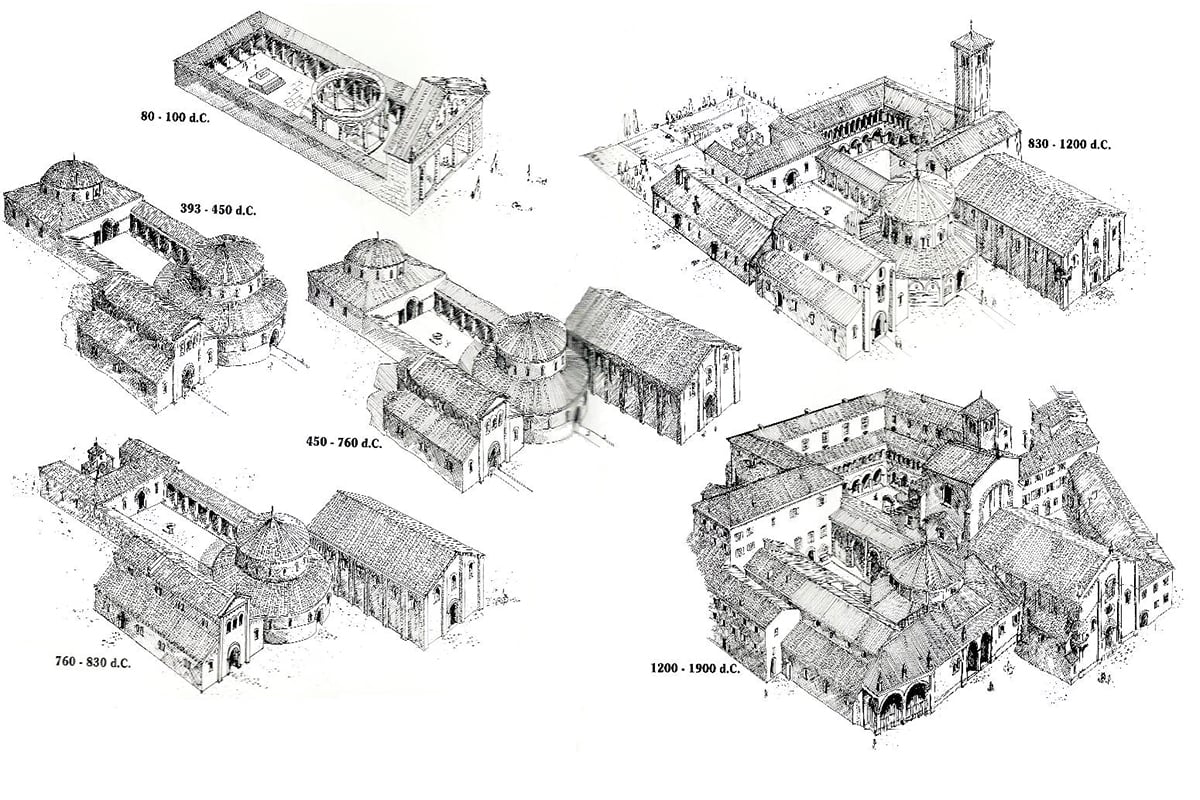 The early days of Santo Stefano: 80 – 100 AD
The early days of Santo Stefano: 80 – 100 AD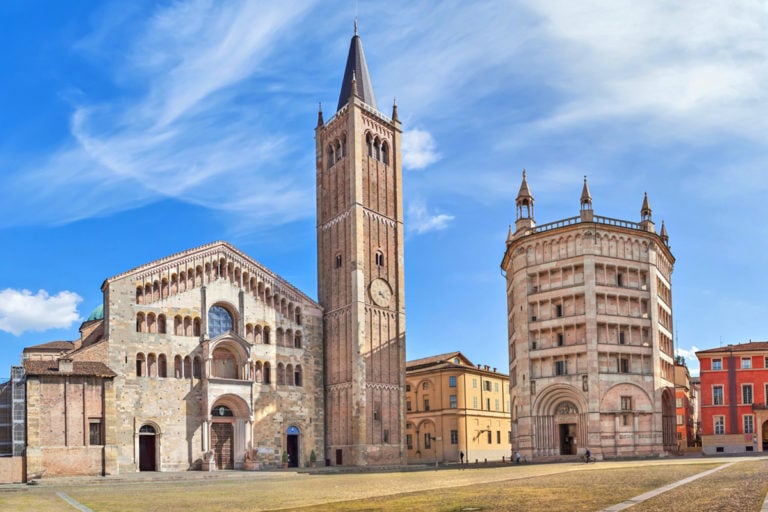
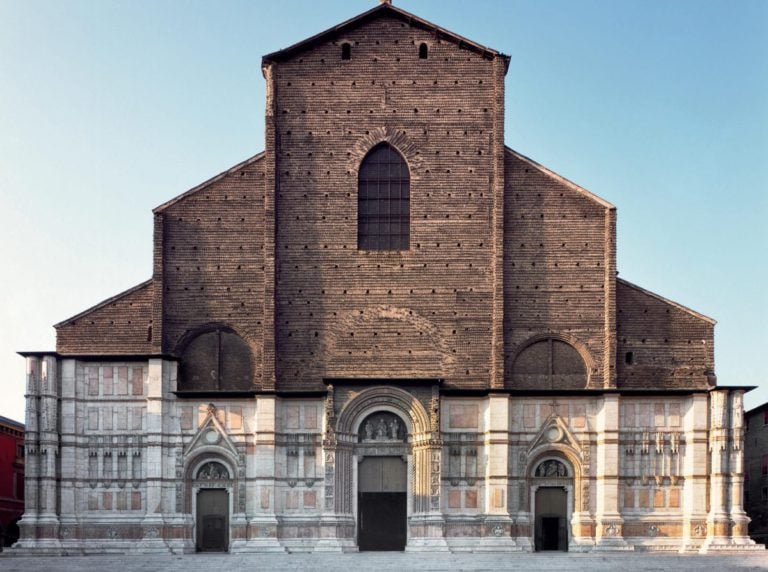
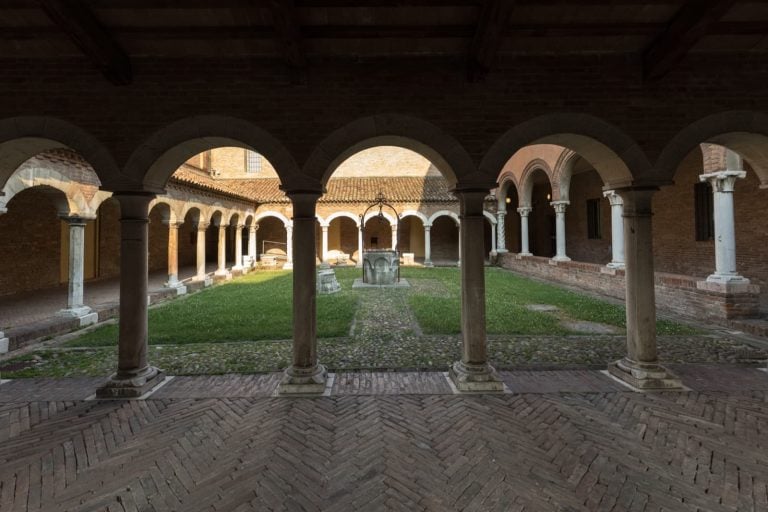
![[Emilia Romagna Art Cities] Bologna in 3 minutes](https://www.travelemiliaromagna.it/wp-content/uploads/2021/06/bo2016bolognabasilica_san_petroniow13574g1g4break-768x512.jpg)
